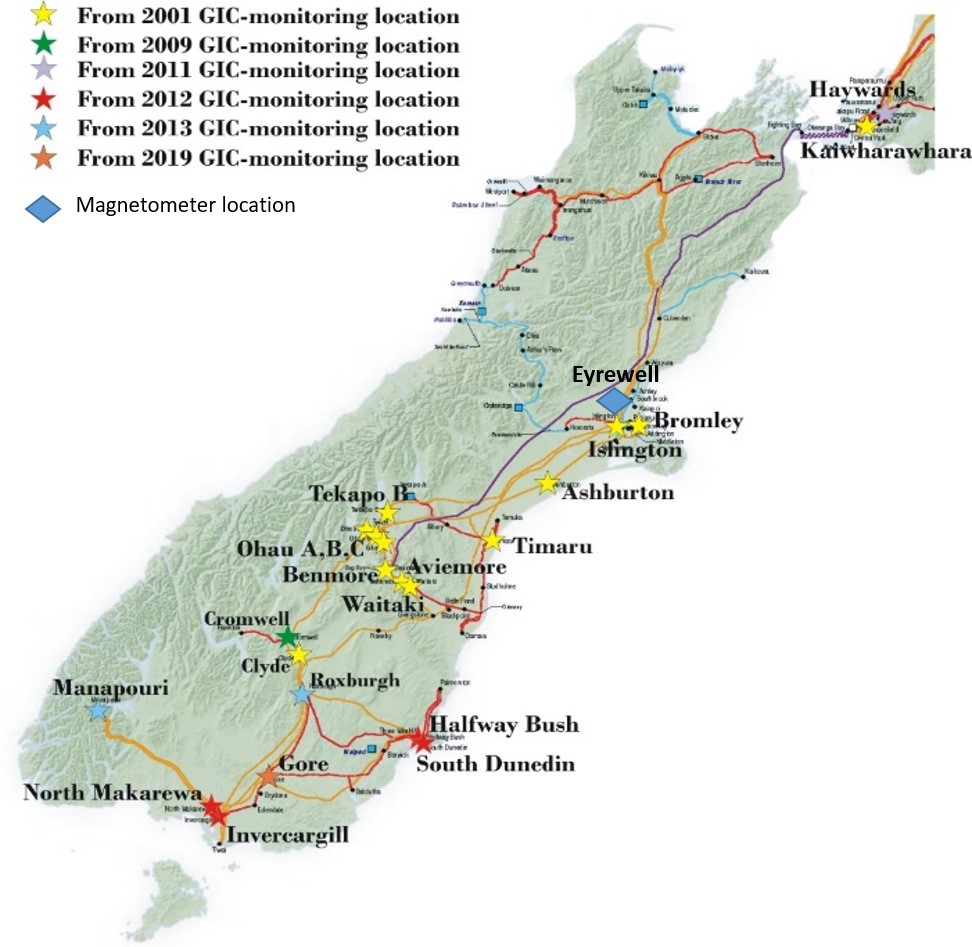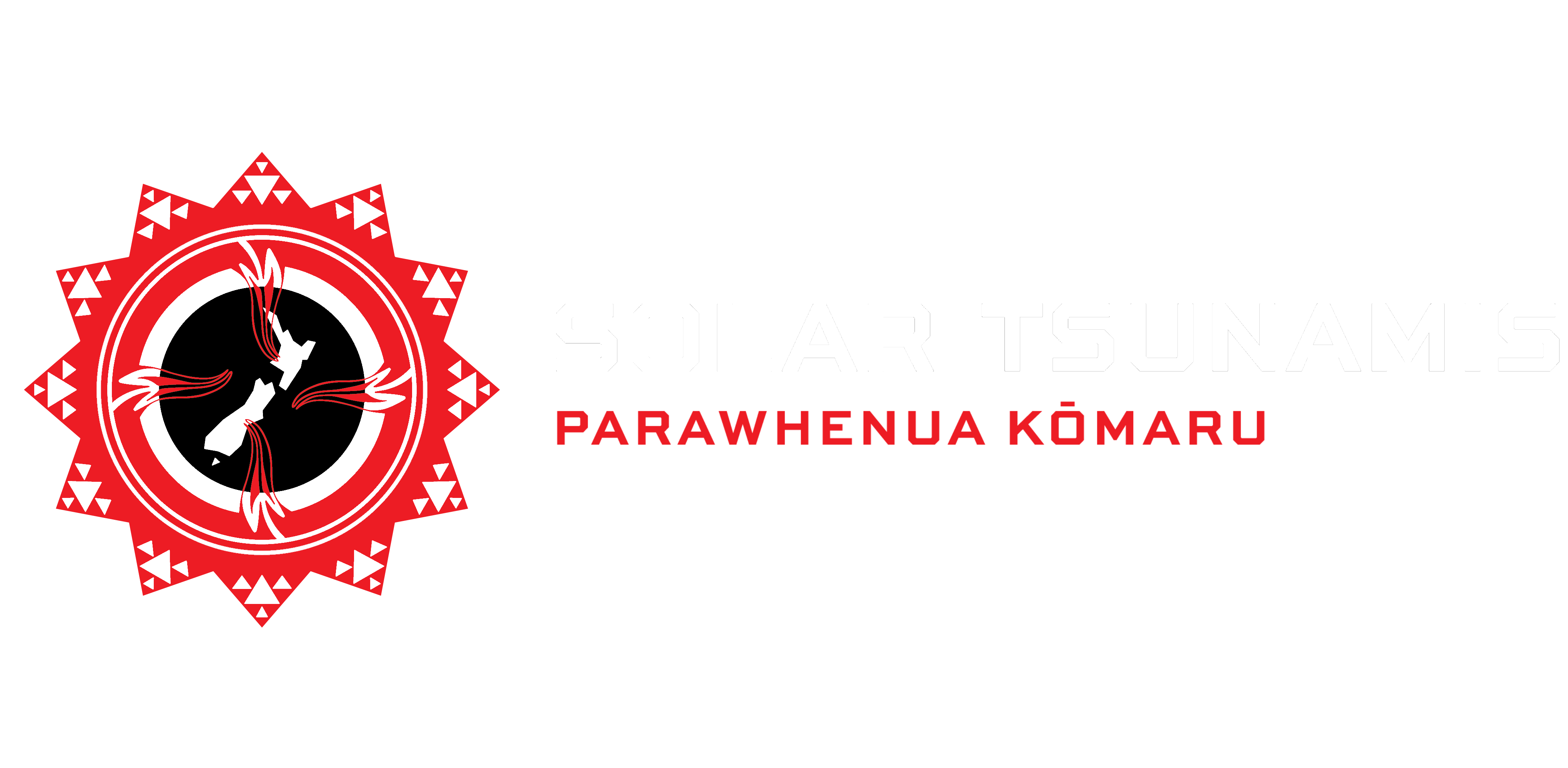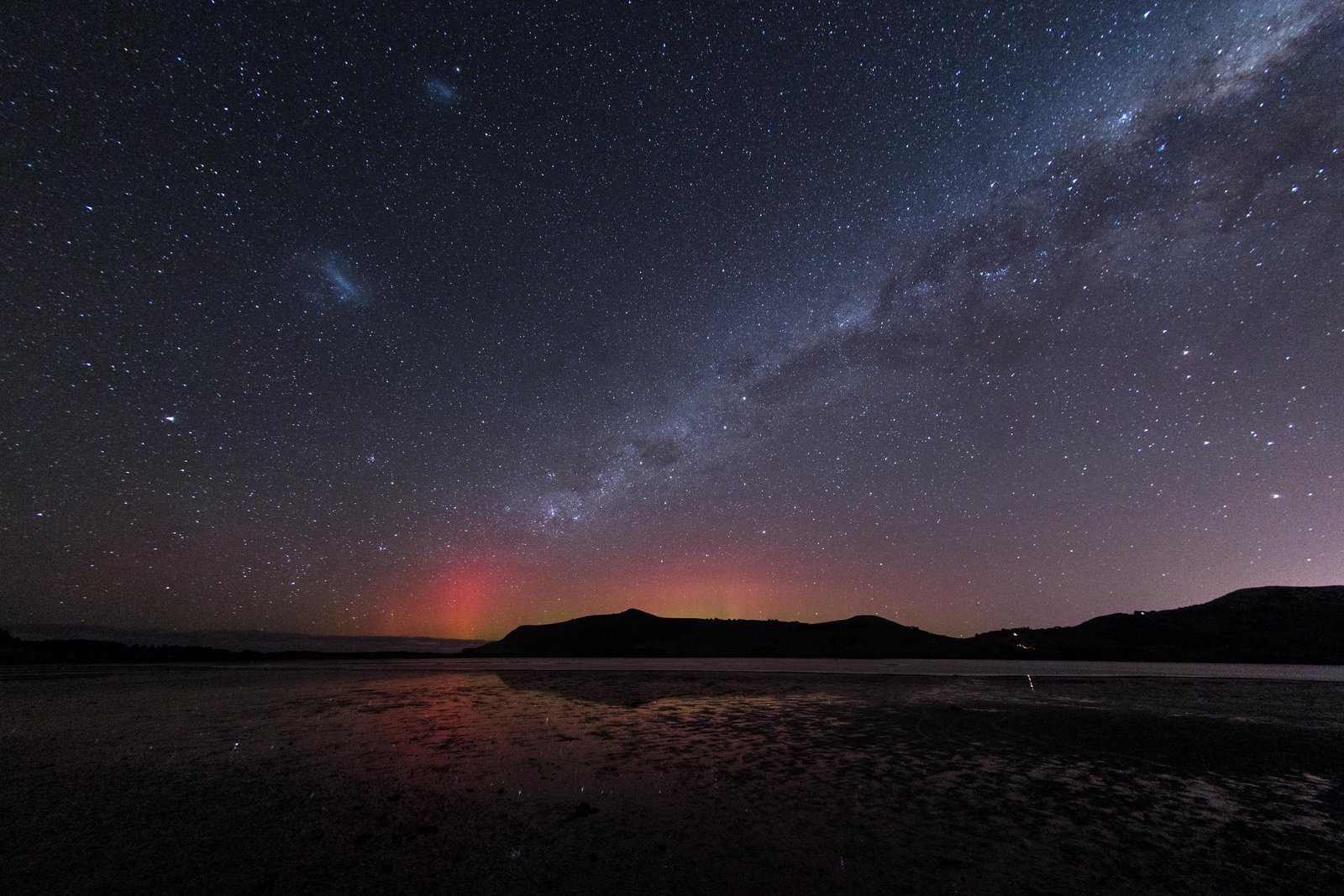
Work Package I: Determining the likelihood and properties of extreme geomagnetic storms at the 1 in 100-200 year level in a New Zealand context. There is over 100 years of historic data from New Zealand’s official magnetometer operated by GNS at the Eyrewell Geomagnetic Observatory, which will be digitised as part of this work package. This data will be used for extreme value statistical modelling to examine the likelihood of future storms, and to model extreme magnetic field variations.
Leaders: Dan Welling (UTA), Tanja Petersen (GNS), Ting Wang (Otago Maths & Stats)

Work Package III: Modelling how the magnetic field varies across NZ during geomagnetic disturbances. New Zealand’s magnetic field is currently measured just outside of Christchurch, at the Eyrewell Geomagnetic Observatory. As part of this work package additional magnetometers will be deployed around New Zealand. This additional data will be used to improve magnetic field models which have been developed for the northern hemisphere to also cover the southern hemisphere.
Leaders: Craig Rodger (Otago Physics), Dan Welling (UTA)
Work Package IV: Improving modelling representation for current geomagnetic disturbances in New Zealand. To do this requires validation, which will be achieved by coupling it to a representation of the national power grid. This can then be used to simulate outcomes for the power grid when there are extreme geomagnetic storms.
Leader: Craig Rodger (Otago Physics)
Work Package V: Mitigation of the space weather hazard requires better quality information to be available to industry. Using this information, the New Zealand energy industry will be in a position to mitigate damage from space weather. This work package will follow multiple routes to improve nowcasting and forecasting. One: upgrading the output from New Zealand’s official magnetometer at the Eyrewell Geomagnetic Observatory so it is available in near real-time. Two: existing models which process solar wind data in real-time producing forecasts of the space weather hazard will be tested for accuracy for New Zealand, and also improved. Three: Probabilistic techniques are used for seismic activity will be extended for forecasting geomagnetic storms.
Leaders: Craig Rodger (Otago Physics), Ting Wang (Otago Maths & Stats), Tanja Petersen (GNS), Dan Welling (UTA)
Work Package VII: Natural gas pipelines, being long buried conductors, are also susceptible to GIC. Pipelines are given “cathodic protection (CP)” by using rectifiers along their length to keep the pipe at a negative voltage relative to the ground. This means that, should there be a flaw in the pipeline coating, current will pass from the ground to the pipe and not cause corrosion of the metal. However, it has been observed that during magnetic storms CP can sometimes be over-ridden putting the pipeline potentially at risk. Not only can corrosion be possible in the worst-case scenario, but over time there may be other implications for the pipeline. In this work package we seek to first analyse monitoring data provided by Firstgas to identify parts of the gas pipeline network where problems may arise, and then to try and understand and model the GIC effects on the New Zealand pipeline network.
Leaders: Malcolm Ingham (VUW)


